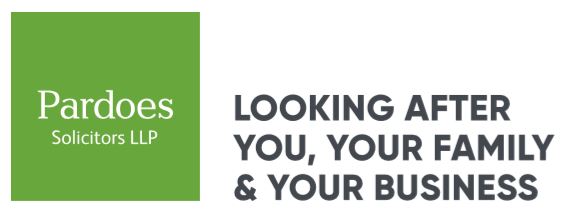By Maeve Vickery of Pardoes Solicitors
Here is a short guide on practical aspects of implementing furlough leave, setting out the key steps employers need to take and based on the current guidance which may be of some help to chamber members and could be put up or linked on the website.
CORONAVIRUS JOB RETENTION SCHEME
The Government announced the Coronavirus Job Retention Scheme, which introduced the concept of furlough leave into UK law and HR practice, on 20 March 2020. Government guidance is available at Gov.UK and www.businesssupport.gov.uk.
This guideline sets out key points and practical steps employers need to take to implement the scheme.
1. Decide which employees to designate as furloughed employees.
The Scheme is intended to help businesses stay in business and at the same time avoid any lay offs and redundancies as a result of the crisis. It applies to staff that were on the payroll on 28 February 2020. It can be backdated to 1 March 2020 for staff who were already laid off, or made redundant as a result of the crisis since that date (as long as those that were made redundant are reinstated first).
Some legal and HR advice has suggested going through a process similar to a redundancy selection, i.e. asking for volunteers and then setting out a matrix using objective criteria. However in many cases these decisions will need to be made and implemented swiftly and a prolonged process is unlikely to be practicable or achievable. Where there is an urgent need to implement the Scheme to avoid redundancies and allow the business to continue to trade a more limited process is likely to be considered reasonable.
Remember that this could be a staged process over time with an initial group of staff being placed on furlough followed by further staff at later dates as the situation changes.
Employers should make sure there is a record of whatever process is adopted. This could be a note of the meeting, or HR recommendations identifying/recommending staff to be put on furlough. This will help guard against any potential allegation of discrimination or unfairness in implementation of the process.
2. Notify those employees of the intended change.
In a standard redundancy situation employers would often gather staff together and inform an entire workforce as a group, followed by separate individual letters and consultation meetings with employees at risk of redundancy. As face to face group meetings should not be happening at present, an email or letter should be sent to all staff explaining the situation, and that this process is being undertaken, whilst at the same time contacting those affected by telephone or video link to discuss the proposal.
3. Agree the changes with affected staff.
The Government guidance states that the proposal should be discussed with staff and changes to their contract made by agreement. However, faced with the alternatives, which are likely to be unpaid leave, lay-off, or redundancy, the majority of affected employees are likely to agree to be placed on furlough leave.
It is possible that collective consultation requirements could arise if more than 20 people are affected but this should not arise where the changes are agreed.
4. Confirm the employees’ new status in writing.
This is an eligibility requirement for accessing the subsidy and a record needs to be kept of the correspondence.
If possible set out how long furlough leave is expected to continue – The minimum furlough period is 3 weeks this can be said to be subject to review.
It is possible for employers to take people in and out of furlough depending on the needs of the business as long as those on furlough have been off for the minimum 3 week period. This is to allow for scenarios where for example, staff fall ill and others need to be brought back to work.
5. Submit information to HMRC
Information needs to be sent to the HMRC about the employees that have been furloughed and their earnings through the new online portal, expected to be operational by the end of April 2020.
6. Seize all employees’ work
Ensure that the employees do not carry out any further work for that employer while they are furloughed.
UPDATED FURLOUGH GUIDANCE added on 7th April 2020
This weekend the Government updated the guidance on the Coronavirus Job Retention Scheme providing some useful clarification. Government guidance is available at www.gov.uk and ACAS guidance is available at www.acas.org.uk
The following can now be furloughed;
- Staff who are “shielding” i.e. those living with someone in a vulnerable group and unable to work from home
- Staff who have to remain at home to look after children
- Office holders including company directors
- “Workers” who are not employees
- Agency workers
- Nannies and cleaners provided they are paid via PAYE
- Staff who left for any other reason after 28 February 2020 with continuity of employment preserved
Staff on furlough should be encouraged to undertake training with salaries “topped up” to the NMW in respect of time spent training if the furloughed wage is lower.
Wages, past overtime, fees and compulsory commissions payments can be claimed.
Discretionary bonuses, tips and commission payments and non cash payments cannot be claimed.
Taxable non-monetary benefits including company cars and private health insurance cannot be claimed.
ACAS guidance has been updated to say that furloughed employees can still take their holiday in the usual way including bank holidays.
WE CAN HELP
For further information on furlough leave please contact us on:
Bridgwater: 01278 457891 Taunton: 01823 446200 Yeovil: 01935 382680 for a free, no obligation discussion.







